I adapted this to my sourdough, as that is all I typically use anymore. Also, this particular bread is one of my standards that I make often, so it's a good place to start.
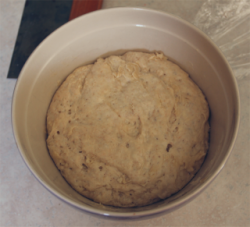
The sourdough starter was built up over night from my mother stock. I use 10 oz of starter (stiff biga) per "home" batch (2 loaves).
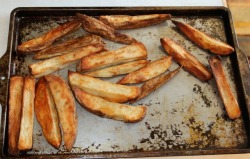
I also roasted some potatoes the night before. The recipe calls for 8 oz, which is about 1 large baker. There are two here. Hamelman isn't specific about the method of roasting, so I do them as I usually do for such things with a little olive oil and a pinch of salt. These were chopped into 1 inch lengths before use.
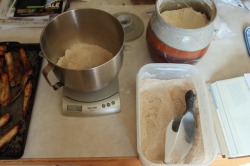
The recipe calls for a moderate amount of whole wheat flour, about 4 oz. I grind my own whole wheat when I can to maintain freshness.

The flours with potatoes are mixed with the water until they come together. This was allowed to sit (autolyse) for a while. For whole wheat recipes, I use a 1 hour autolyse. I'm also using an older KA5 mixer, shown here with a spiral attachment. This attachment is recommended only for KA6 and higher mixers, but it will fit on the KA5. The speed must me kept on the lowest setting, however, and care taken to watch that the mixer does not bog down.
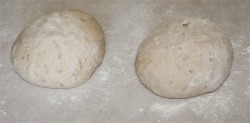
After an hour, 10 oz of the starter and 1 tbs kosher salt were added to the dough. I adjusted the water up slightly also, as the dough felt tight. The final dough was soft and sticky. I bulked the dough for three 50 minute intervals and gave the dough a folding, as described by Hamelman, after the first two. After the third interval, I split the dough and rested it for 15 minutes.
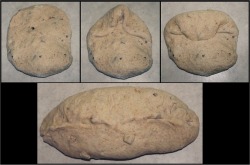
I made two Batards as described in Hamelman.
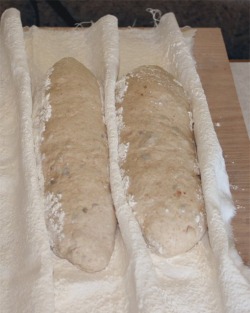
The Batards were placed in a couche (floured linen cloth) and proofed for 2.5 hours at room temperature (~72 F). I've found this is about right for my sourdoughs, but it will vary depending on the ambient temperature.
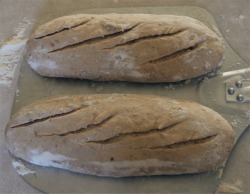
Following proofing, the loaves were slashed. I've started using a home made lame made from a razor and Emory board. It works fine, but is a bit dangerous to load. I need to pick up a real lame handle soon!
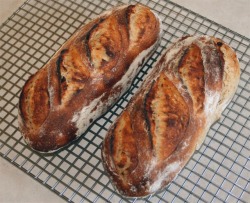
The loaves were baked in an electric oven set to 500 F. After 5 minutes, the temperature was dropped to 450 F. I also steamed when the loaves were loaded by filling a cake pan with 1 cup of heated water (the pan was in the oven prior to loading).
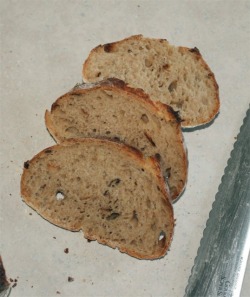
The final crumb was a bit smaller than I anticipated, but acceptable. This bread is a wonderful sandwich loaf with a nutty flavor. It goes well with lunch meats and cheeses and is one of my favorites.

 RSS Feed
RSS Feed